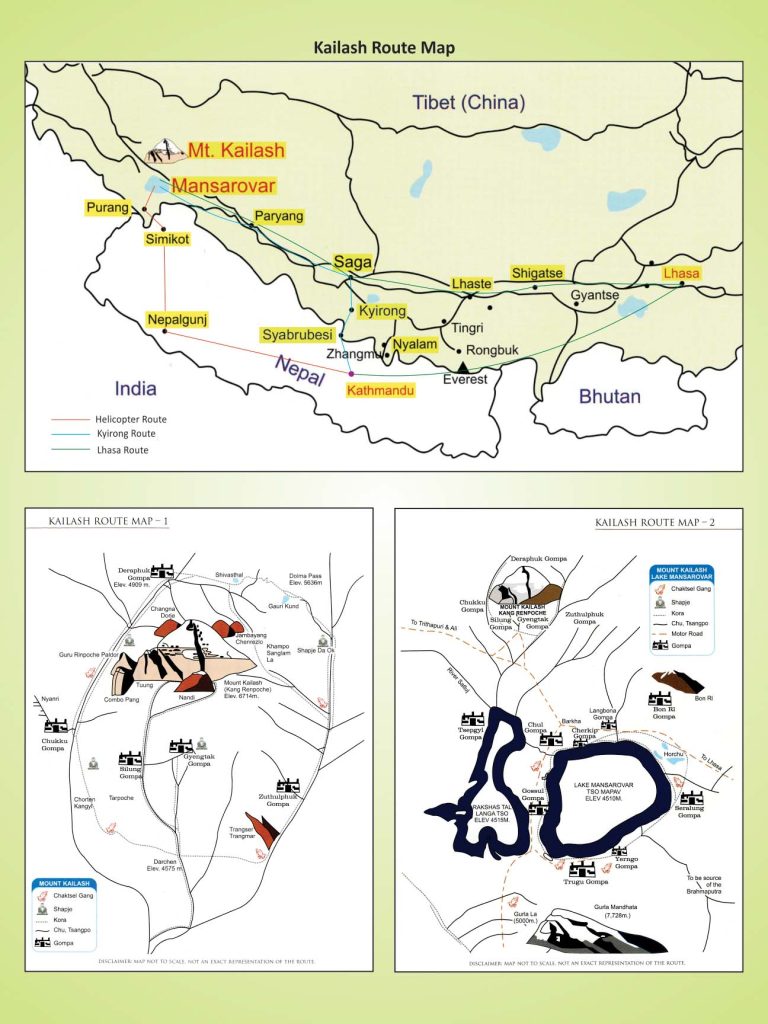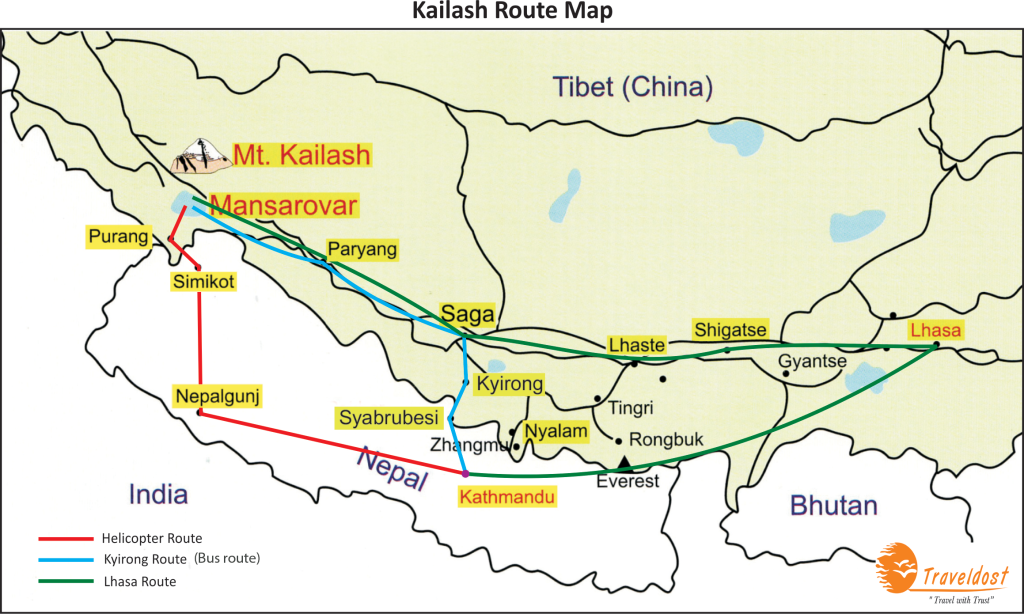Undertaking the Kailash Mansarovar Yatra is a dream for many, and understanding the available routes is crucial for planning your journey. Each route offers a unique combination of experiences, challenges, and conveniences. This guide will help you explore the different ways to reach Mount Kailash and Mansarovar Lake.
1. The Nepal Route (via Kathmandu)
The Nepal route is one of the most popular and convenient ways to undertake the Yatra. This journey begins in Kathmandu, where pilgrims complete documentation and preparation before heading to Tibet.
Key Highlights
- Accessibility: A combination of flights and overland travel makes this route relatively easy.
- Stops: Includes key sites like Kathmandu’s Pashupatinath Temple and scenic towns like Saga and Darchen in Tibet.
- Accommodation: Hotels in Kathmandu and basic lodges along the journey in Tibet.
Journey Overview
- Day 1-2: Arrive in Kathmandu, complete documentation, and explore Pashupatinath mandir and Buddha Neelkanth temple, shopping of Rudraksh around shops near temples.
- Day 3-4: Travel to Tibet (via flight to Lhasa or drive to the border), acclimatize.
- Day 5+: Proceed overland to Mansarovar Lake and Mount Kailash.
Ideal For
- Pilgrims seeking a balanced journey with minimal trekking.
- Those who prefer shorter travel durations.
Challenges
- High-altitude acclimatization is necessary.
- Costs are higher due to international travel.
2. The Uttarakhand Route (via Lipulekh Pass)
This government-organized route is steeped in tradition and involves extensive trekking. Managed by the Indian Ministry of External Affairs, it offers an authentic pilgrimage experience.
Key Highlights
- Trekking Experience: Pass through breathtaking landscapes of the Kumaon region.
- Cultural Significance: Includes holy sites like Om Parvat and the Kali River.
- Stops: Lipulekh Pass, Taklakot, and onward to Mansarovar and Mount Kailash.
Journey Overview
- Days 1-4: Travel from Delhi to Dharchula, then to Lipulekh Pass by road and trek.
- Days 5-8: Trek through high-altitude terrain to reach Kailash Mansarovar.
- Day 9+: Return via the same route.
Ideal For
- Adventurous pilgrims willing to trek through challenging terrains.
- Those seeking a more traditional and economical route.
Challenges
- Physically demanding due to trekking and rugged conditions.
- Limited infrastructure and basic facilities.
3. The China Route (via Lhasa)
For a scenic and immersive experience, the China route offers a luxurious approach to Kailash Mansarovar. Pilgrims fly to Lhasa, Tibet’s capital, and proceed overland.
Key Highlights
- Cultural Richness: Explore Tibetan landmarks like the Potala Palace and Jokhang Temple.
- Comfortable Travel: Well-maintained roads and better accommodations.
- Scenic Beauty: Stunning views of the Tibetan plateau during the overland journey.
Journey Overview
- Day 1-2: Arrive in Lhasa, explore the city, and acclimatize.
- Day 3-5: Travel overland to Mansarovar Lake via Shigatse and Saga.
- Day 6+: Visit Mount Kailash and undertake the parikrama.
Ideal For
- Pilgrims seeking a more comfortable journey with minimal physical effort.
- Travelers interested in Tibetan culture and scenic landscapes.
Challenges
- Higher costs due to international flights and luxury services.
- Chinese permits and visa processes require advance planning.
4. Helicopter Route (via Nepal)
This modern and efficient route combines helicopter travel with minimal overland trekking, making it ideal for those with time constraints or physical limitations.
Key Highlights
- Speed: Shorter travel time compared to other routes.
- Accessibility: Ideal for elderly pilgrims or those unable to trek.
- Stops: Fly from Kathmandu to Simikot and Hilsa before reaching Tibet.
Journey Overview
- Day 1-2: Arrive in Kathmandu, fly to Simikot, and then to Hilsa by helicopter.
- Day 3-5: Overland journey to Kailash and Mansarovar.
- Day 6+: Return via the same route.
Ideal For
- Pilgrims with limited time or physical constraints.
- Families traveling with elderly members.
Challenges
- Expensive compared to other routes.
- Weather-dependent helicopter schedules can cause delays.

Comparison of Routes
| Route | Duration | Physical Effort | Cost | Highlights | Challenges |
| Nepal Bus Route | 10-14 days | Moderate | Los | Balanced journey | Acclimatization needed |
| Uttarakhand Route | 15+ days | High | High | Traditional experience | Physically demanding |
| Lhasa China Route | 12-16 days | Low | Very High | Scenic & cultural journey | Expensive |
| Helicopter Route | 7-10 days | Very Low | High | Quick & efficient travel | Weather-dependent delays |
Conclusion
Choosing the right route to Kailash Mansarovar depends on your preferences, physical fitness, and budget. Whether you seek a traditional trekking adventure, a scenic cultural journey, or a quick and efficient pilgrimage, there’s a route to match your needs.
Would you like more detailed information on a specific route or tips for preparing for high-altitude travel? Let me know, and I’ll assist further!

